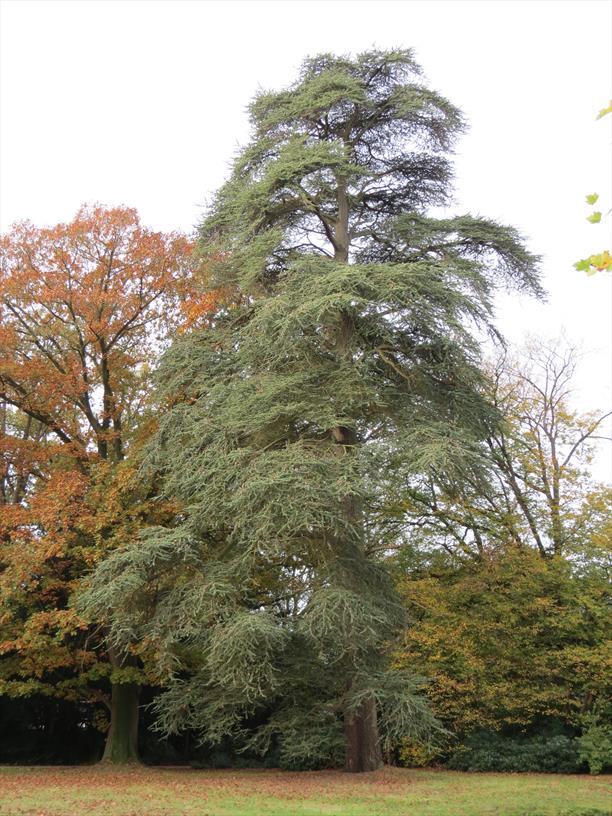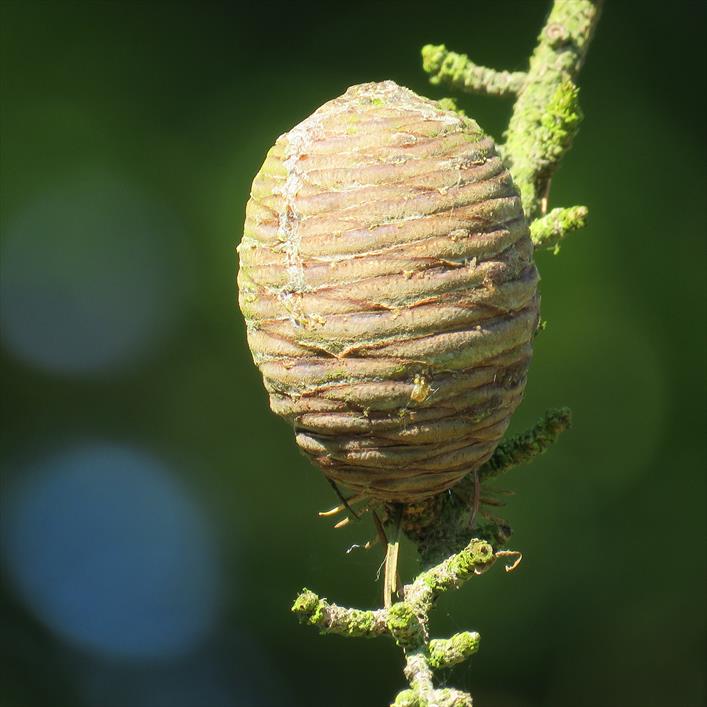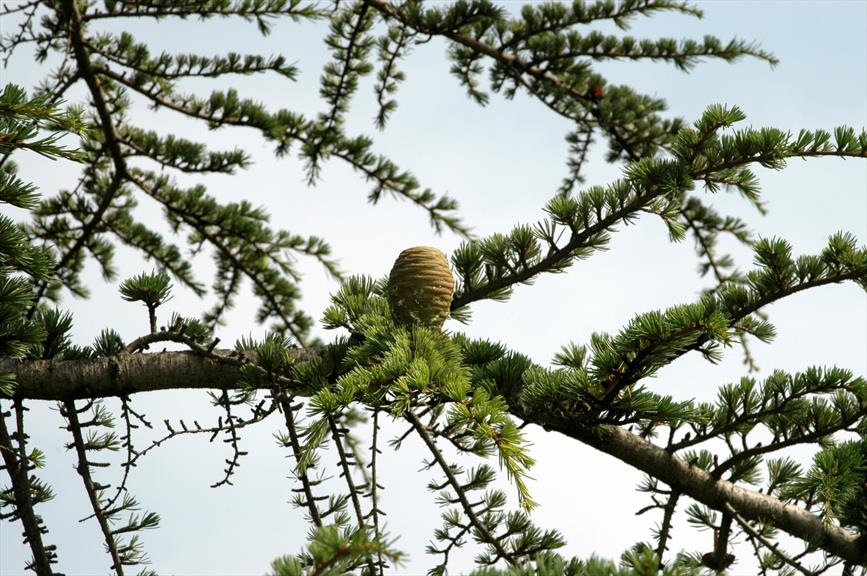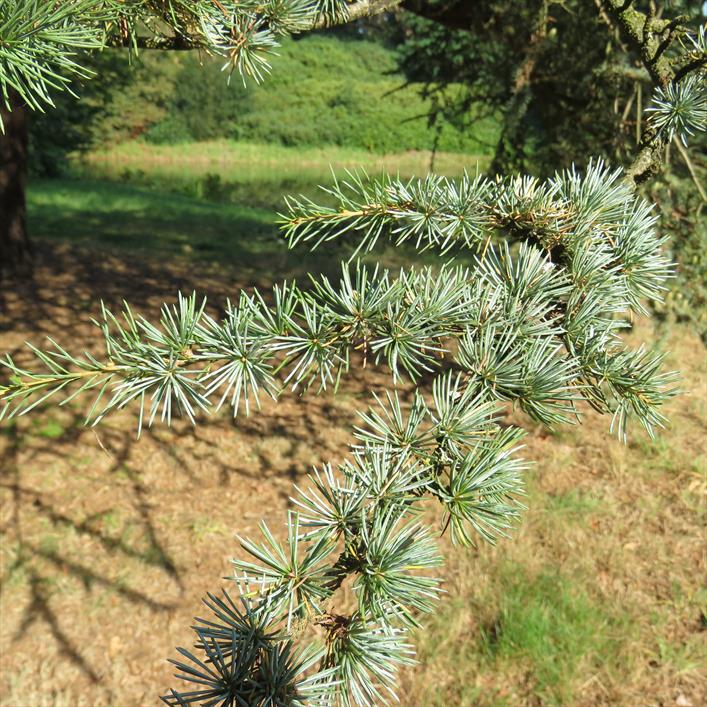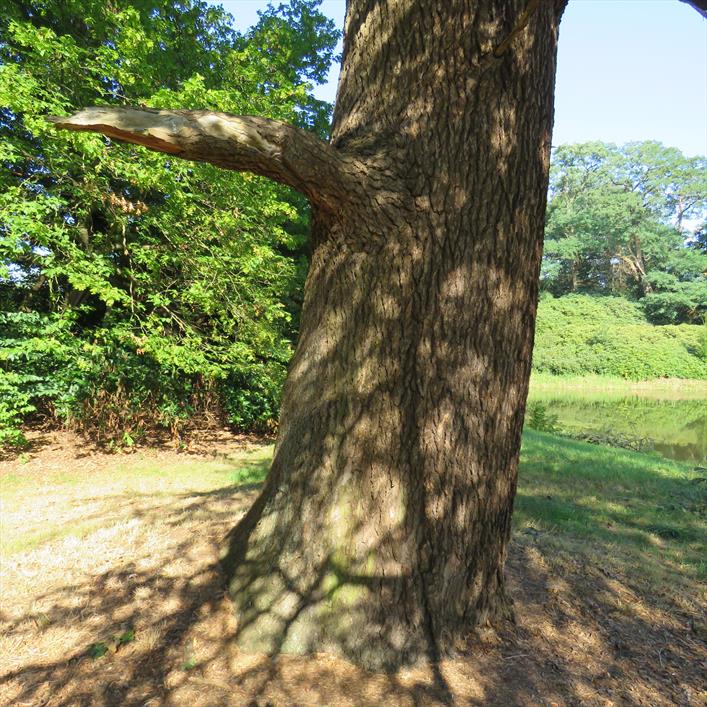Cedar-of-Lebanon
Cedrus libani
Pine familiy (Pinaceae)
Mummification in a war zone
The cedar of Lebanon originates from the mountains of Lebanon, Syria and southeast Turkey. Its wood has been used by man since 1000 years B.C. in the construction of temples, palaces and ships, and was an important export product for the Phoenicians. The ancient Egyptians used sawdust and resin derived from the cedar of Lebanon in the mummification of their dead. The Bible relates a story of King Solomon building a temple out of cedar in Jerusalem (1 Kings 5). Over the course of history cedar of Lebanon forests have been widely exploited by the Assyrians, Romans and Ottomans. On the slopes of Mount Lebanon, which has been plagued by wars over the centuries, a small number of ancient trees still survive. During World War I, the Turks used the wood to stoke the fires of their steam locomotives.
Read more.... »Themes
Crown jewel on the Twickel Estate and in Blijdenstein Pinetum and Kerkrade Botanic Garden.
Part of the Dutch National Conifer Collection.
An essential oil from the wood is used in the perfume industry.
Wood is used as a timber in construction. The wood is moderately hard, extremely durable and retains its delightful fragrance for many years. It is the national emblem depicted on the Lebanese flag and the official logo of Middle East Airlines. Rare, both in its native region and outside it. Can live to be very old, up to 1000 years.
The leaves and the wood have antiseptic and expectorant properties. They act to disinfect the respiratory tract.
Hebrew priests were ordered by Moses to use the bark of the cedar of Lebanon to treat leprosy. The Hebrew prophet Isaiah used the cedar of Lebanon as a metaphor for the pride of the world. Furthermore this tree is mentioned in the Epic of Gilgames - a poem from Ancient Mesopotamia.
Cedar of Lebanon used to be an important export product of the Phoenicians, Assyrians, Romans and Ottomans. The timber was used in the construction of temples (e.g. the temple of Salomo ca 1000 BC), palaces and ships. Large-scale deforestation took place during the First World War when the Turks used wood to run their steam locomotives.
Details
| Description: | Conifer, up to 40 m. |
|---|---|
| Distributions: | Middle east |
| Habitat: | Mediterranean conifer forests. |
| Year cycle: | Perennial (polycarpic evergreen) |
| Hardiness: | 5 - 14 f (hardy - cold winter) |
| Flowering period: | Juli - november |
| Flower color: | Grey, green, brown |
| Notes on flowers: | Male pollen-cones are brown when mature; female seed-cones ripening to grey-brown. |
| Fruiting period: | Januari - november |
